#sinking of Lusitania
Text

June 4 1917
The first Pulitzer Prizes were awarded, with the winners selected by trustees from Columbia University.
The winners included:
Laura E. Richards, Maud Howe Elliott and Florence Hall in biography or autobiography for Julia Ward Howe
Jean Jules Jusserand in history for With Americans of Past and Present Days.
Herbert Bayard Swope in reporting for article series " "Inside the German Empire" in New York World
New-York Tribune in editorial writing for an editorial article on the first anniversary of the sinking of the Lusitania
Photo: The New York Tribune‘s front page the day after the sinking of the Lusitania. May 8, 1915.
The Lusitania Anniversary (1916) here: https://en.wikisource.org/wiki/New_York_Tribune/1916/The_Lusitania_Anniversary
#Pulitzer prizes#June 4#1917#New York Tribune newspaper#first anniversary#sinking of Lusitania#front page#article#history#WW1
0 notes
Text
OTD: 109 Years ago
RMS Lusitania departed New York for the very last time.
6 days later she was gone.

youtube
#ocean liners#ocean liner#maritime disasters#cunard line#rms lusitania#Imagine being the guy who took the last photo…#Like you just took the final photo of one of the greatest liners afloat.#I mean excluding the wireless operators photo taken on the day and during the sinking#Youtube
12 notes
·
View notes
Text
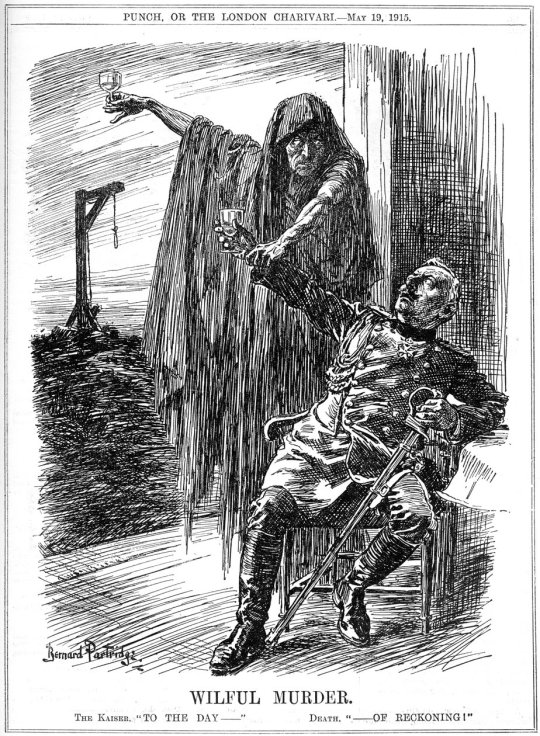
Bernard Partridge - Punch cartoon on the sinking of the Lusitania, 1915.
#Bernard Partridge#Punch cartoon on the sinking of the Lusitania#apparition#ghost#hooded#death#gallow
7 notes
·
View notes
Text

Sinking of the Lusitania - 1915.
#vintage illustration#vintage travel#ocean liner travel#luxury travel#ocean liners#the lusitania#steam ships#voyages#ship travel#the 1900s#famous disasters#ships sinking#maritime disasters#disasters
7 notes
·
View notes
Text

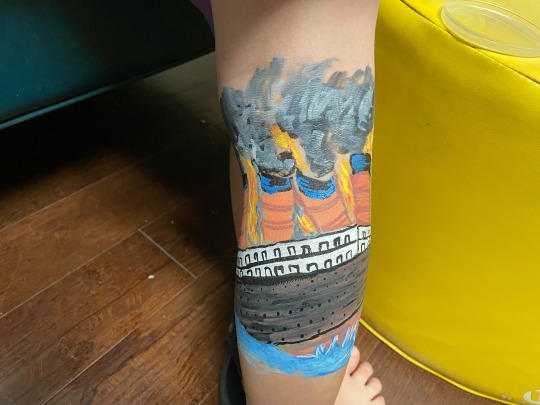

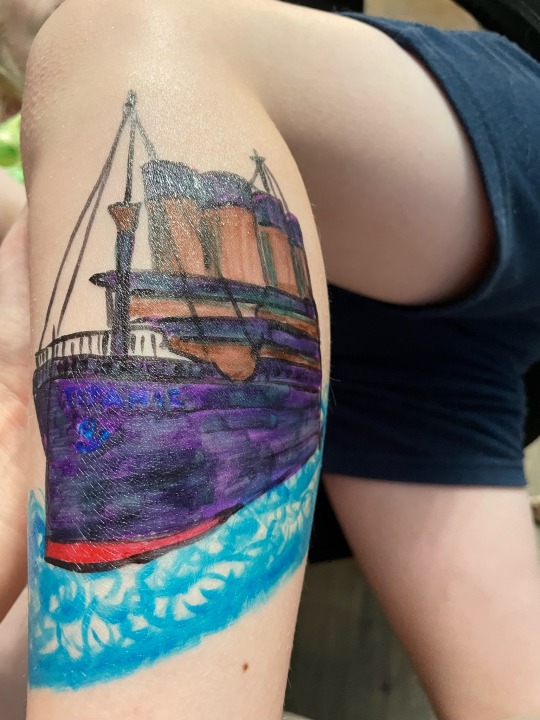

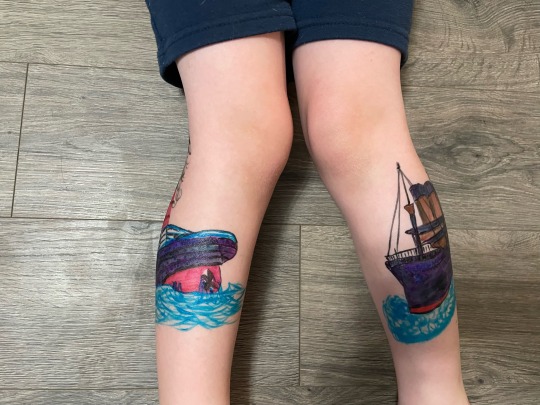
Weird talent I didn’t know I’d be developing. I’m getting pretty good at it though 😂
4 notes
·
View notes
Text
why must i have so much knowledge abt world war 1. famously the world war people care the least about
#the lusitania sinking was NOT what got the usa involved in the war i think thats a misconception people have#that happened in 1915 which was early in the war and if u recall the usa joined late and did dogshit basically#it was one in a series of issues we had w the germans unrestricted sub warfare#plus the zimmerman telegram was the thing that really pushed us into the war i think
4 notes
·
View notes
Text
1915- Sinking of the RMS Lusitania
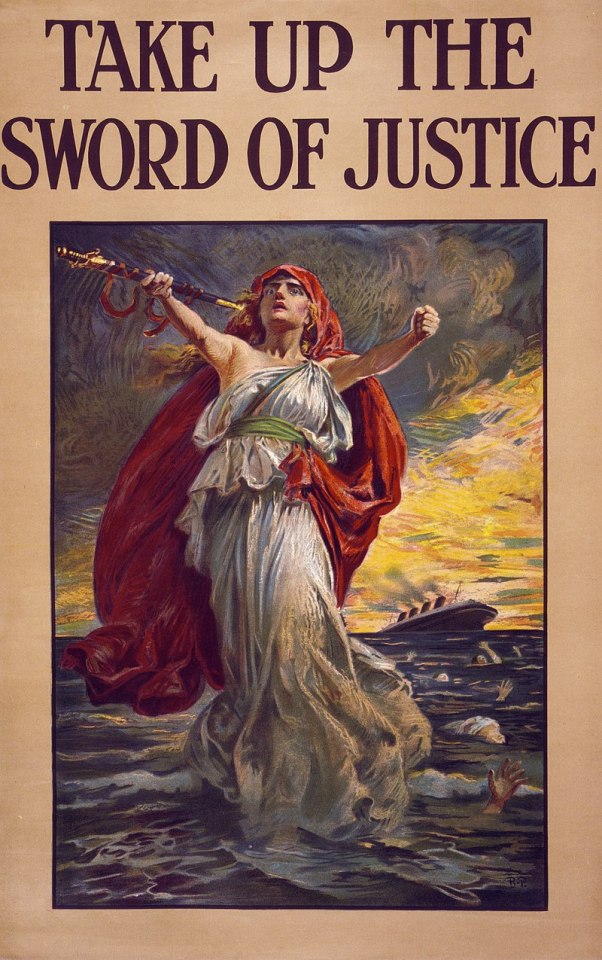
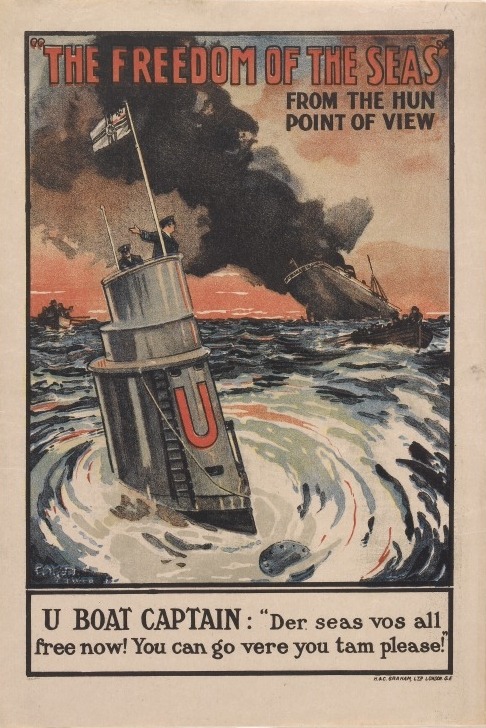
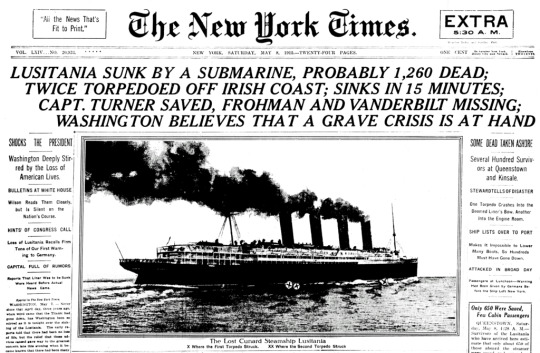
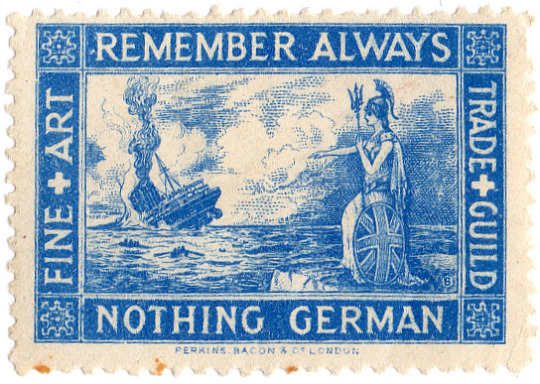
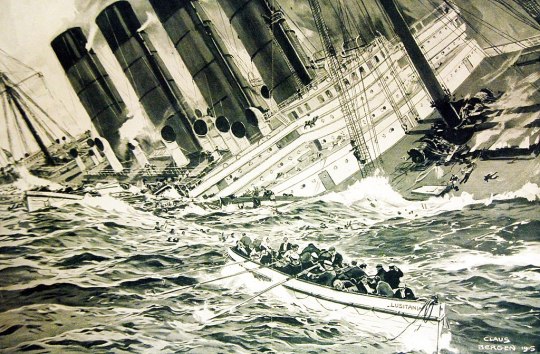
The sinking caused an international outcry, especially in Britain and across the British Empire, as well as in the United States, since 128 out of 139 U.S. citizens aboard the ship lost their lives.
6 notes
·
View notes
Text
me: okay im pretty tired so im just gonna find something light to watch
video about the rms laconia: exists
me: oh hey, i know that one pretty well, i wont end up angry crying about it this time. clicks on video
an hour later
me: is angry crying about it this time
#kai rambles#...listen#ive said like ten thousand times that im a ship person but not a warship person#but i know about a fairly decent amount of them#mostly because a lot of liners got requisitioned on ww1 or ww2#or were secretly helping the war effort like lusitania#so like i know about lusitania or the captain or hood or sydney etc.#olympics dazzle paint for the war effort is actually a really cool topic#but like#obviously a lot of warship stories are very tragic like the uss indianapolis#and the laconia#but the laconia is just like being punched over and over and over again#because even before the disaster youve got italians pows on board who were being treated awfully and someone having to stand up and stop it#them youve alsl got her being unaccompanied on her route despite being a target and needing it because the navy just didnt have the boats#which led to some officers and civilian passengers feeling overconfident because ''we dont need an escort'' and oh yeah there were civilian#specifically the wives and CHILDREN of the sailors or soldiers#and to make it worse shes over 20 years old and needs new boilers and anywhere she goes a giant black cloud of smoke follows from her funne#so shes an easy target which led to her a u-boat torpedoing her and her sinking which also had this thing where they tried to trap the pows#in the ship so everyone else could get off which fuck that and also it was listing so not all the lifeboats could be launched and most were#overcrowded and also there were sharks atfacking them#and then the u-boat is coming nearer but when the captain realises who were on board HE STARTS A RESCUE EFFORT#and he lies to base and manages to organise a rescue with other u-boats (preventing an attack actually) but then hitler gets wind of it and#he cancels that and tells them to leave the survivors to their fates SO THIS GUY DISOBEYS HITLER AND MAKES A DESPERATE CALL IN ENGLISH TO#THE ALLIES ASKING FOR RESCUE PROMISING NOT TO ATTACK IF THEY DONT ATTACK AND GIVING HIS POSITION TO THEM#and they don't even believe it for two days straight but eventually a few more u-boats arrive to help with promises from italy france &#britain to help and like theyve got a 1000 people mostly in lifeboats tied to the u-boats flying the red cross. and in the night the u-boat#on scene get separated and an american bomber arrives on scene and the survivors think rescues coming but then the bomber gets orders#TO SINK THE U-BOAT SO THEY FIRE OFF THREE ATTACKS WITH ONE JUST LANDING WITHIN THE LIFEBOATS KILLING PEOPLE#and the u-boat guy ends up having to leave the scene because hes fearful for his crew now understandably and the survivors just have to wai#for rescue which does come. but wanna know what happened to the bomber and the guy who gave the order? NOTHING. NOT EVEN AN INVESTIGATION
2 notes
·
View notes
Photo





Marbled Monday
This book is somewhat unassuming on the outside, with is brown leather and subtle gold tooling and stamping, but on the inside has the most beguiling marbled endpapers! The book is Elbert Hubbard’s Scrap Book: Containing the Inspired and Inspiring Selections Gathered During a Life Time of Discriminating Reading for His Own Use. We hold three copies of the book—this is copy 2 and the only copy we hold with this binding.
Elbert Hubbard (1856-1915) was an American writer, publisher, artist, and philosopher who founded the Roycroft Arts and Crafts Community in Aurora, New York in 1895. Hubbard fashioned himself somewhat after William Morris as a socialist craftsman, although he later abandoned socialism. Hubbard and his wife Alice died in the sinking of the Lusitania on May 7, 1915 when the ship was torpedoed by a German U-boat.
Elbert Hubbard’s Scrap Book was published in 1923 by The Roycrofters in Aurora, New York. It is a collection of passages by notable figures that Hubbard had collected during his life. The marbled papers are in a Serpentine pattern, similar to those we shared a few weeks ago on our copy of Romanae Historiae Compendium... . These papers feature teal, reddish brown, and cream colors swirled together in a sort of zig-zagged pattern.
View more Marbled Monday posts.
-- Alice, Special Collections Department Manager
#Marbled Monday#Elbert Hubbard#Roycrofters#The Roycrofters#Roycroft#marbled papers#serpentine#patterns#decorative papers#Sinking of the Lusitania#Lusitania#scrap books#arts and crafts#socialism#(sort of)
48 notes
·
View notes
Text

#doge#ww1#sinking of the Lusitania#le sunk by a u-boat has arrived#le trying to smuggle arms in a passenger ship has arrived#le pretext for entering the war has arrived
8 notes
·
View notes
Text
youtube
Sinking of the Lusitania
Winsor McCay
USA, 1918
(originally silent, here with a score by HESPERUS)
On May 7th 1915, in the midst of World War One, the British ocean liner RMS Lusitania was struck by a torpedo shot from an Imperial German U-boat. Germany had issued warnings that ships sailing under UK banners would be treated as hostile in the maritime warzone, and would be attacked to enforce the naval blockade, but evidently the risk of an ocean liner transporting civilians to the USA becoming a target was considered low enough for the Lusitania to set sail.
The Germans made good on their word. More recent research reveals the Lusitania may have been carrying ammunition as well as passengers, thus making it a military target, but it is hard to argue that the lives lost were of no consequence. 761 people survived out of the 1,266 passengers and 696 crew aboard. 123 of the casualties were American citizens.
At the time, the US had not yet joined the war. Propaganda offices seized this opportunity to rally for it: the public was understandably disgusted by Germany’s attack on what was ostensibly a ship full of civilians. The author of the Little Nemo comic strip and celebrated animator Winsor McCay was deeply struck by the story and the loss of life. He poured his outrage into what may be considered the first animated documentary .
And he did so on his own time and dime- his current employer, wealthy businessman William Randolph Hearst (the inspiration for Citizen Kane) was opposed to the US joining World War One, and so preferred to placate public opinion rather than embrace their horror. He had hired McCay to illustrate anti-war cartoons and propaganda for his newspapers, not rouse people against „the Huns”.
McCay rebelled, and set to work on the Sinking, financing it out of his own pocket. It’s worth noting that even in this heartfelt patriotic production, he does not miss an opportunity to tout himself as the „originator and inventor of Animated Cartoons,” a title he frequently applied to himself. It was not true, but it might have felt so for McCay. He was one of the pioneers.
Using all techniques available to him including the brand new method of painting on transparent cels, McCay created an animated account of the tragedy in a form much resembling a newsreel of the time. The film begins with a live action sequence showing him researching the incident, consulting with August Beach (a reporter who had been the first on the scene) and studying a scale model of the ship. McCay evidently took pains to ensure his retelling was as accurate as possible, even as he made it strikingly emotional. It took him over two years to complete, assisted by friends and working in his off hours while still obligated by a contract with Hearst.

This was still the silent era, so facts about the ship and a play by play were printed on the intertitle cards, with McCay’s smooth, sombre animation showing the ship’s doomed voyage. The film lasts twelve minutes- at the time, the longest animation ever produced. It took the Lusitania eighteen minutes to sink. Fittingly, the animation feels at once slow and excruciating, and unexpectedly quick. Blink, and you will miss the moment the ship goes down, but McCay’s art rends the heart. The waves and smoke billow, the water laps around the vanishing hull in terrifying silence. Lifeboats and bodies float in the sea.
I chose a version of the film with an appropriately grieving score, because in 2022, silent films are harder to focus on. Still, you can turn it off at any time. Maybe play ambient sound instead, a hushed audience holding their breath around a rattling old projector.
6 notes
·
View notes
Text

It’s hard to pin the invention of animation on a single date. Film archivists have estimated that more than 90 percent of films made before 1929 are lost forever, which makes it almost impossible to say with any certainty which first can be credited to which film.
Multiple techniques, developments and technologies were instrumental in the creation of animation as we know it today. And this progression has continued, with more variations created every decade since the 1900s. Squideo is going to dive into the evolution of animation, from its murky beginnings to the multibillion dollar industry it has become.

The first animated film has been credited to multiple titles, including Pauvre Pierrot (1892), The Enchanted Drawing (1900), Fantasmagorie (1908) and Gertie the Dinosaur (1912). The names of other films have been listed in newspapers from the time, but since they’ve been lost these cannot be verified.
Like live-action films of the time, these early hand-drawn animation films were silent. They would be shown in cinemas or, as in the case of Winsor McCay’s Gertie the Dinosaur, at circuses and vaudeville acts. Animators of this age were working without the later constraints of studios or censorship, and had a lot of freedom to develop new animation styles and techniques.
The realism of early animation was greatly improved by the invention of rotoscoping, first showcased in 1912’s Koko the Clown by Max Fleischer. The rotoscope technique traced motion picture footage of a human performer, and is still used to this day albeit with the use of a computer rather than manually tracing film frames.
youtube
Animation improved rapidly within these twenty years, and this is perhaps best demonstrated with The Sinking of the Lusitania (1918), by Winsor McCay. The detail from this film, which was the longest made at that time (12 minutes) and the first confirmed example of an animated documentary, was vastly improved from his first because of the introduction of cel animation. This is named after the celluloid sheets which replaced paper in the animation process, and saved animators the time of creating multiple drawings of backgrounds and stationary objects.
The realistic animation style of McCay’s film, which was widely praised, was quickly eclipsed however by a new style which swept across the American animation industry: rubber hose animation. This debuted in 1919 when Pat Sullivan and Otto Messmer created Felix the Cat.
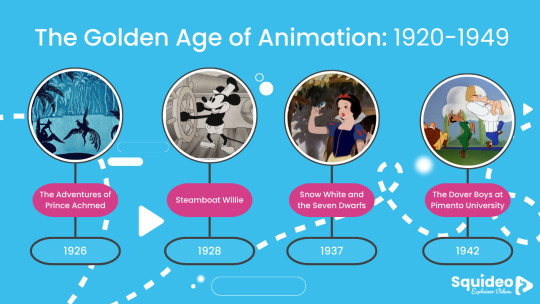
Felix the Cat was a huge draw for 1920 cinema goers, becoming a hugely popular character which featured in 89 animated cartoons between 1919 and 1925. However the creators’ reluctance to embrace sound film technology, which was debuted in 1923, saw the ultimate decline of Felix and paved the way for Disney’s eventual domination of the American animation industry.
Despite sound technology emerging early in the decade, it took time for animators to adapt it into their work. Some of the most notable animated works of the period are still silent, such as the first claymation film, Long Live the Bull (1926), and the first feature-length animated film: The Adventures of Prince Achmed (1926). Created by Lottie Reiniger, this silhouette animated film famously introduced the multiplane camera which the Walt Disney Company would later reinvent and use for their first feature-length film Snow White and the Seven Dwarfs (1937). It was Disney which arguably popularised sound in animation, with their animated short Steamboat Willie (1928).
Walt Disney was convinced that sound technology would change the future of film, and was the secret to making his new animated character – Mickey Mouse – a hit with audiences. He was right, which imbued the company with the confidence to use other animation technologies that emerged. Five years later, Disney became the first animation company to use Technicolor when it released Flowers and Trees (1932).
youtube
Disney’s style began to dominate animation, especially in America. For the smaller studios that lacked their budget and workforce, there was a desire for a different animation style that could be made faster and cheaper. Limited animation was the solution, and it ushered in a new era.
Warner Brothers Animation launched in 1933. It would soon become notable for its Looney Tunes series, but it was Merrie Melodies that brought in limited animation. This technique reduced the number of drawings required for each frame, in turn reducing the work for animators and speeding up the production process. It was ideal for television, a burgeoning medium post-WW2, which had smaller screens than cinemas. The Dover Boys at Pimento University (1942) was one of the first notable uses of the technique.
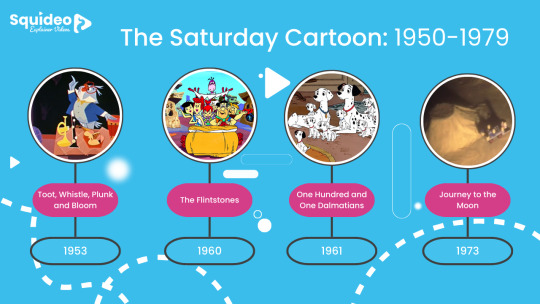
A lot of innovation during this next period occurred in television production, and it also saw the rise of amateur productions as filming equipment became more readily available to the public. Changing technology additionally created a divide between film and television animation which had differing styles and quality standards during these decades.
Disney was the first studio to use CinemaScope for its animated short Toot, Whistle, Plunk and Bloom (1953). Created by 20th Century Fox in that same year, it remained popular until its discontinue in 1967. This changed the aspect ratio of productions to accommodate wider, rectangular cinema screens. Television screens on the other hand were small and square. And at the start of the 1950s, many households still only had black and white televisions. This was perfect for limited animation, masking the reduction in animation quality. Television ownership grew rapidly through the decade, and producers started investing in cartoons.
youtube
The first animated TV series was Crusader Rabbit (1949), followed by shows more familiar to modern audiences like The Woody Woodpecker Show (1957), Captain Pugwash (1957), Yogi Bear (1958), and a reappearance from Felix the Cat (1958). The first animated show to make it to prime-time was The Flintstones, which ran from 1960 to 1966. These shows were more specifically targeted at children: referred to as cartoons rather than animated television. Created by the most successful cartoon studio of the era – Hanna-Barbera (1957-2001) – The Flintstones was followed by hits like Top Cat (1961), Wacky Races (1968) and Scooby-Doo, Where Are You? (1969).
Animated films, however, were marketed as motion pictures. By the end of the decade, animation studios had started to use xerography animation – first trialled in Sleeping Beauty (1959), then fully used in One Hundred and One Dalmatians (1961). Disney’s Ub Iwerks had adapted the Xerox process, first introduced during WW2, to work on film. This copying technique allowed animator drawings to be printed directly onto cels, massively speeding up the production process. This technique was used throughout the 1960s and 70s and other animation studios adopted the technology.
youtube
New technology also became available to the general public. The commercially successful Super 8 camera launched in 1965, and amateur animators were able to record their own cartoons. This inspired new animation styles, such as brickfilming. Journey to the Moon (1973) was the first recorded of its kind, and paved the way for future animated films like The Lego Movie (2014).
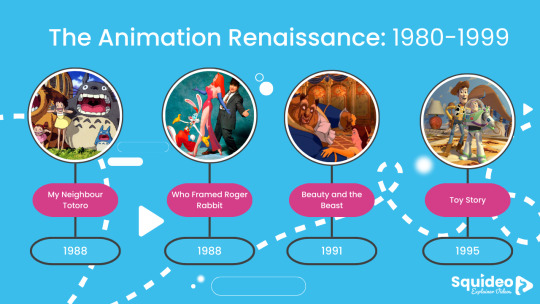
At the start of the 1980s, ‘Saturday morning cartoons’ were flourishing while animated motion pictures were in decline. This was perhaps best exemplified by Disney, who launched Disney Television Animation (1984), while the Walt Disney Animation Studios had its budget slashed. One of its most popular 1980s films, Who Framed Roger Rabbit (1988), was created by an animation department which had just been sent into exile from the main studio lot.
Likewise, the other Big Five production companies started focusing on television animation. Paramount Studios created Nickelodeon (1977) and Warner Brothers Cartoons shifted to create television content. This unit would later become Cartoon Network Studios (1994). The biggest television cartoon to emerge from this period is The Simpsons, which first aired in 1987 on The Tracey Ullman Show, and is one of Fox Broadcasting Company’s biggest assets.
This did leave space for overseas animation companies, most notably the Japanese Studio Ghibli, to find the spotlight with English-speaking audiences. Castle in the Sky (1986) and My Neighbour Totoro (1988) were both critically acclaimed. Likewise, Aardman Animation – the British claymation studio – rose to prominence with its work on the Peter Gabriel Sledgehammer (1986) music video which paved the way for its Creature Comforts and Wallace and Gromit series in the 1990s. Universal Pictures also launched DreamWork Pictures in 1994, releasing its first film Antz in 1998, and would become a big player in the 2000s.
youtube
Arguably the most successful studio to emerge was a small computer division originally created by Lucasfilm in 1979. Pixar pioneered 3D computer animation which they first publicly debuted in The Adventures of André & Wally B (1984). They would go on to make the first 3D computer animation feature film, Toy Story (1995), with Disney – although they were beaten in television by Canadian studio Mainframe Entertainment’s ReBoot (1994).
Disney was already developing digital production techniques such as its Animation Photo Transfer (APT) process was first used in Black Cauldron (1985). Their partnership with Pixar, formalised in 1991, massively improved this digitalisation; most notably with CAPS. First used in The Rescuers Down Under (1990), the Computer Animation Production System provided a host of new digital tools to animators, and kickstarted the Disney Renaissance.
This produced massive hits, not just for Disney but also breaking global box office records. The success of their films, especially The Lion King (1994) prompted their rivals to revive their own animated feature film projects. Other animated feature hits of the 1990s included Space Jam (1996), Anastasia (1997), Antz (1998), The Rugrats Movie (1998) and The Iron Giant (1999).
youtube
The highest-grossing hits of the 1990s belonged to Disney and Pixar with the top five films being The Lion King (1994), Aladdin (1992), Toy Story 2 (1999), Tarzan (1999) and Beauty and the Beast (1991). The latter film also became the first animated film to be nominated for the Academy Award for Best Picture.
Alongside 3D computer animation, CGI (computer-generated imagery) was growing in popularity for live-action films. First appearing in Westworld (1973), it opened the door for creators. In 1999, the latest CGI trend – motion capture animation – was used to add the first fully animated character into a live-action picture. While Jar Jar Binks wasn’t the biggest hit, Star Wars: The Phantom Menace (1999) proved to be a turning point for computer animation as the new century began.
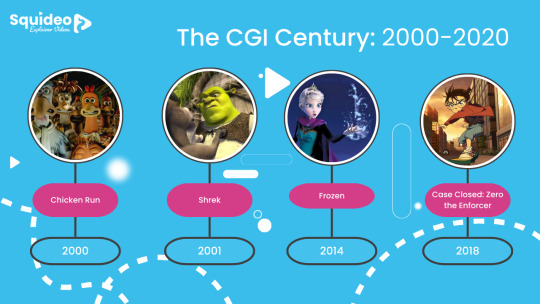
CGI and 3D computer animation has permanently changed animation. Few films over the past twenty years were created using the traditional hand-drawn 2D animation process, although they still proved popular with audiences. This included the French film Les Triplettes de Bellville (2003), Spain’s Klaus (2019), Japan’s Ponyo (2008) and America’s The Simpsons Movie (2007). All of these films still use digital animation tools to streamline production and minimise costs.
What these changes mean, however, is that animation is no longer ruled by the largest corporations with the largest animation departments. Small teams of animators can create quality feature films using the available technology, and this has propelled the growth of small production studios. The introduction of streaming platforms has also widened the viewership for international animation.
Japanese animation, particularly in the anime style, has benefited from this. While Japanese studios gained a foothold with western audiences in the late 1980s, it has recently catapulted in popularity. Netflix reported that 50 percent more households around the world watched at least one anime title during the first nine months of 2020 compared to the whole of 2019. Studio Ghibli remains the most successful export, continuing its success with Spirited Away (2001), Howl’s Moving Castle (2004) and The Tale of Princess Kaguya (2013) to name a few. More studios are joining their ranks, such as the record-breaking MAPPA, WIT Studio, Madhouse and CoMix Wave Films.
youtube
Other non-American studios that are benefiting from the decentralisation of the animation industry include Aardman Animation, Les Armateurs, BreakThru Films, The SPA Studios and Cartoon Saloon. American animators have also broken away from the studio system. LAIKA was created following the success of A Nightmare Before Christmas (1993), this studio has since released Coraline (2009) which is America’s highest-grossing stop-motion film.
Many of these films are still distributed through large American companies or made in partnership with them. Illumination Studios, the makers of Despicable Me (2010) and The Grinch (2018), was incorporated into a Universal Pictures division almost as soon as it was founded. And Aardman Animation’s stop-motion feature film Chicken Run (2000) was made with DreamWorks Animation, a unit of Universal Pictures.
Since its first film in 1998, DreamWorks has gone on to create two of the most profitable animated franchises: Shrek and Madagascar. Shrek (2001) helped define the future of DreamWorks and its aim to become the antithesis of Disney – an interesting goal considering it was co-founded by a former Disney chairman, Jeffrey Katzenberg, and Disney collaborator, Stephen Spielberg. Shrek modelled its characters after their celebrity voiceover artists; it ditched original scoring for pop songs; and it leant into juvenile humour.
youtube
Disney – which purchased Pixar Animation Studios in 2006 – continued to make 2D style animation at the beginning of the 2000s. With the rising success of other 3D animation features like Toy Story and Shrek however, this was phased out. Disney’s last 2D animated feature film to date was Winnie-the-Pooh (2011), and its last 2D Disney Princess was Tiana in Princess and the Frog (2009).
Their biggest hits were Pixar productions – Finding Nemo (2003), Up (2009), The Incredibles (2004), Ratatouille (2007), Monsters, Inc. (2001), WALL-E (2008) and Cars (2006) – until Frozen (2013) returned them to the top. The top three highest-grossing animated films of the 2010s belonged to Disney.
Disney hasn’t ruled out a return to 2D animated features and, for its 100th anniversary celebrations, has created new 2D animated shorts which resurrect original characters like Oswald the Lucky Rabbit.
As one of the oldest animation studios in existence, it feels natural to look to Disney for an indication where the industry is heading in the 2020s. But as the past thirty years have proved, the industry has become a more even playing field where anyone can succeed.
Work With Us
Ready to create an animated video of your own? Watch the video below to get a better understanding of how Squideo can help promote your business, then get in touch with us to find out more!
youtube
#animation history#lost films#fantasmagorie#gertie the dinosaur#rotoscope#koko the clown#the sinking of the lusitania#cel animation#rubber hose#rubber hose animation#felix the cat#claymation#long live the bull#the adventures of prince achmed#multiplane camera#snow white and the seven dwarfs#steamboat willie#mickey mouse#technicolor#flowers and trees#merrie melodies#limited animation#cinemascope#the flintstones#xerography#super 8 camera#brickfilm#who framed roger rabbit#studio ghibli#aardman animations
1 note
·
View note
Text
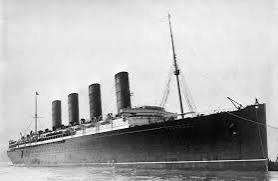

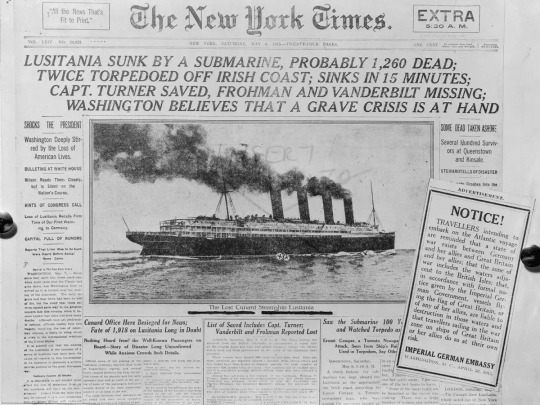
The sinking of the Lusitania by an Imperial German Navy U-boat happened on May 7, 1915.
29 notes
·
View notes
Note
As a native do you have any strong feelings about the sinking of the Lusitania?
Sinking in 20 minutes is crazy
52 notes
·
View notes
Text
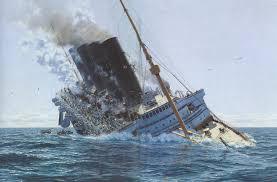

The sinking of Lusitania in 1915 was considered the spark that drew the United States into WWI. The British ship leaned so far starboard that most of the lifeboats were useless and in 18 minutes she was gone, taking 1200 innocent passengers with her.
#RMS Lusitania#Cunard liner#WWI#torpedo#Irish coast#submarine#tragedy at sea#Atlantic Ocean#1200 lost#U-boat#lifeboats#Ireland#UK#USA#7 May 1915#On this day
26 notes
·
View notes
Text
OTD 109 Years ago:
RMS Lusitania is torpedoed by U-20 and sinks in 18 minutes
1199 are killed, including 123 Americans.
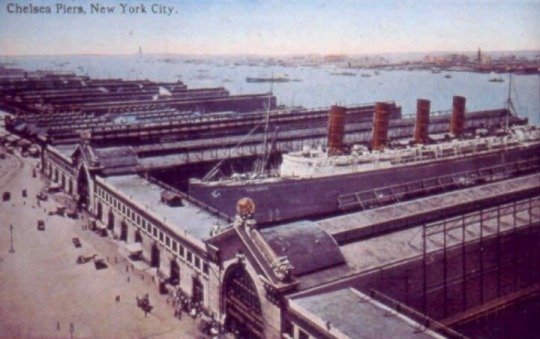
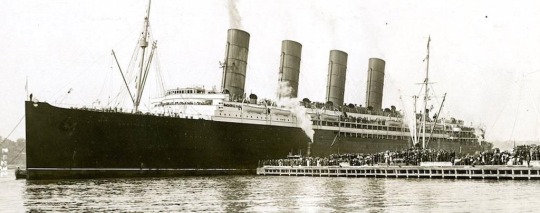

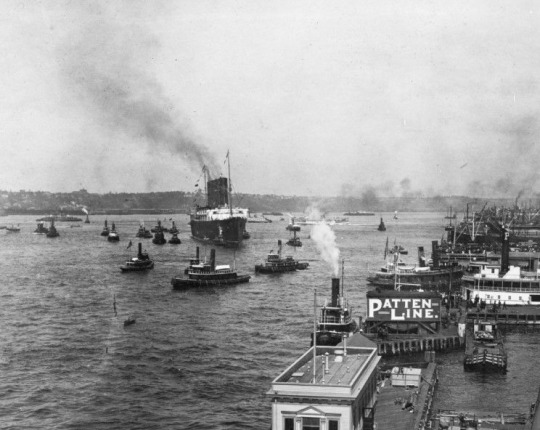
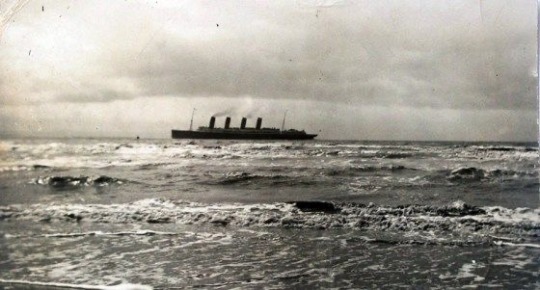


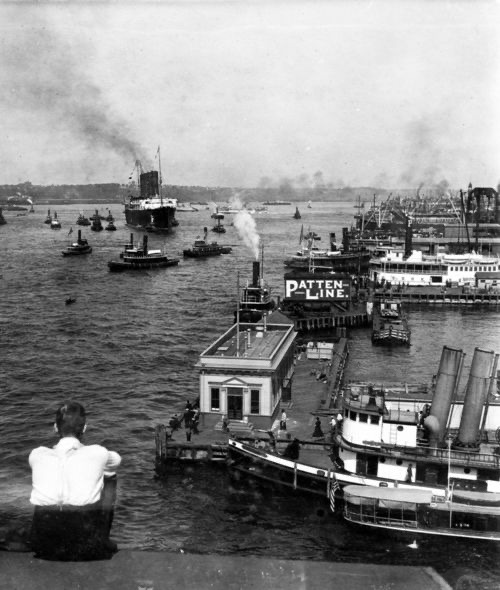
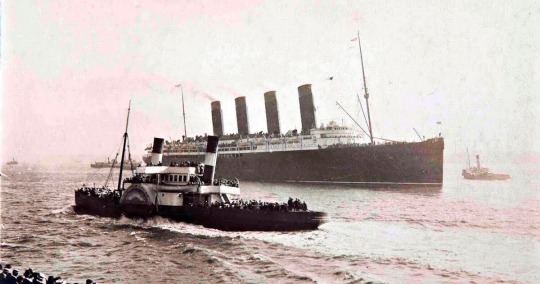

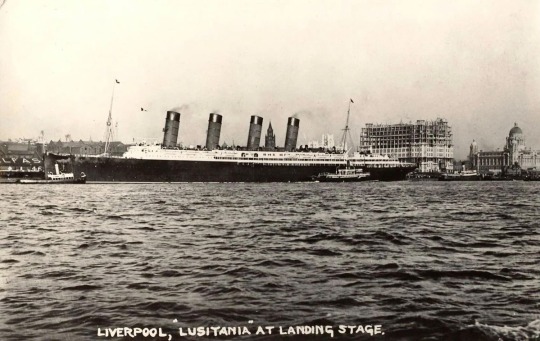
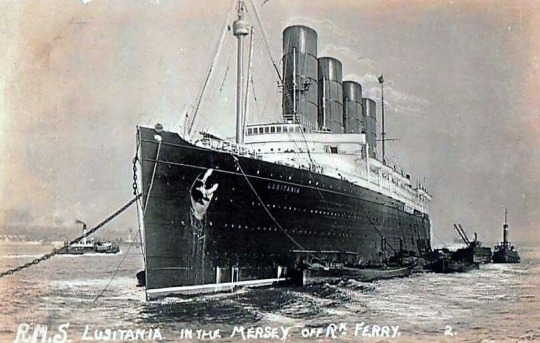
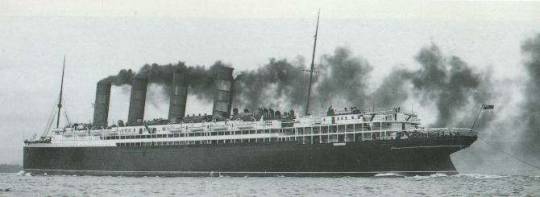
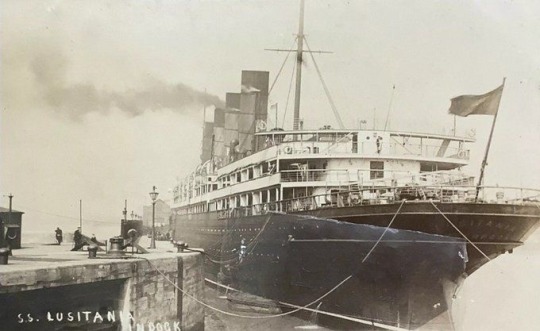
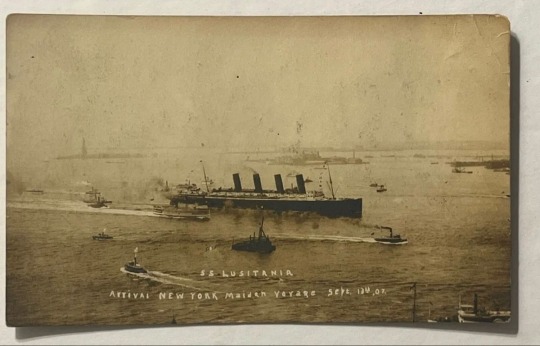

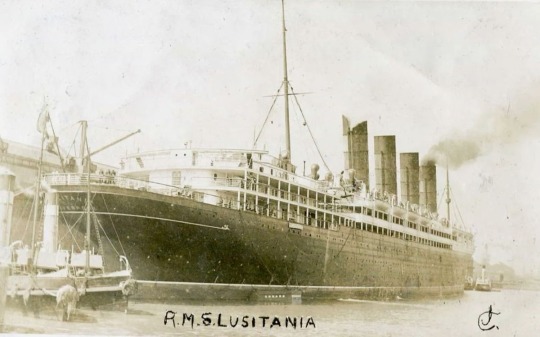
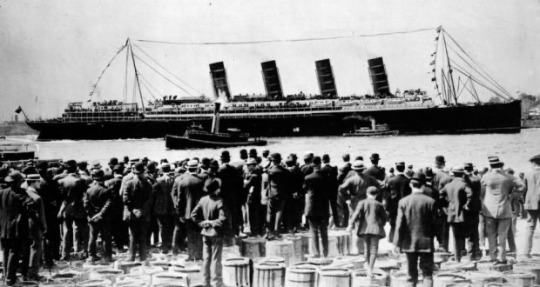

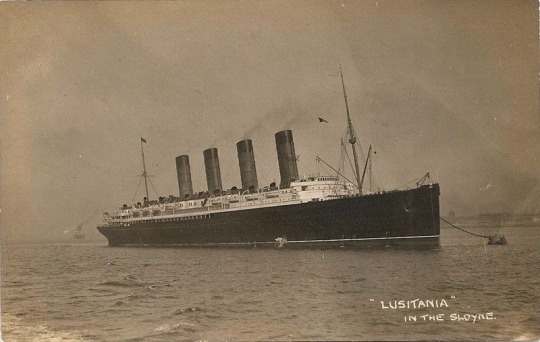

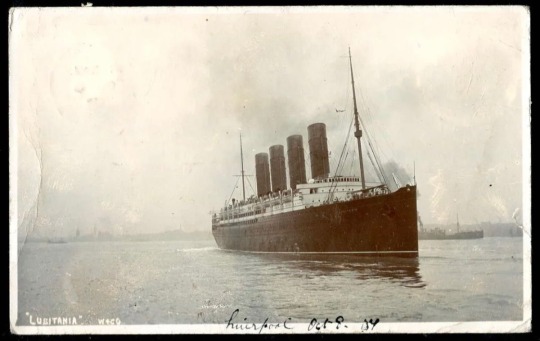

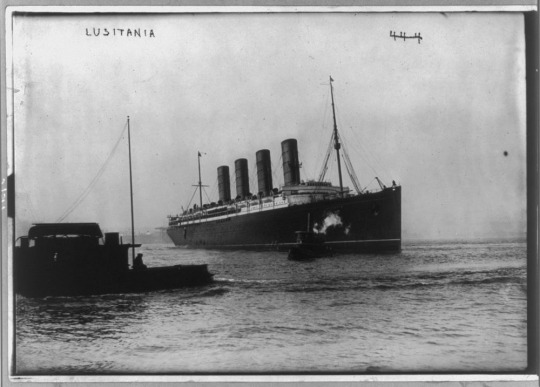
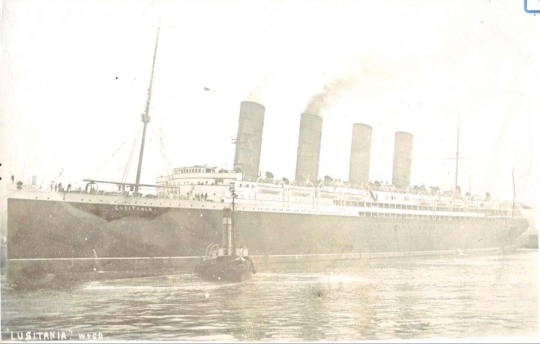



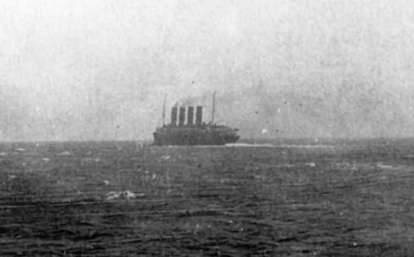
The disaster among other things indirectly results in the US joining the war.
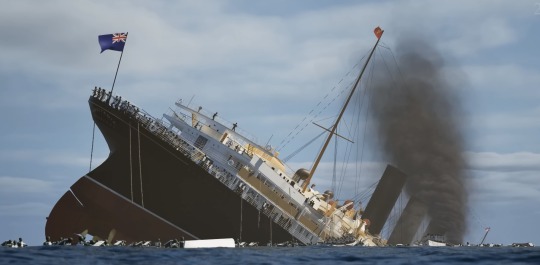
May they never be forgotten.
23 notes
·
View notes